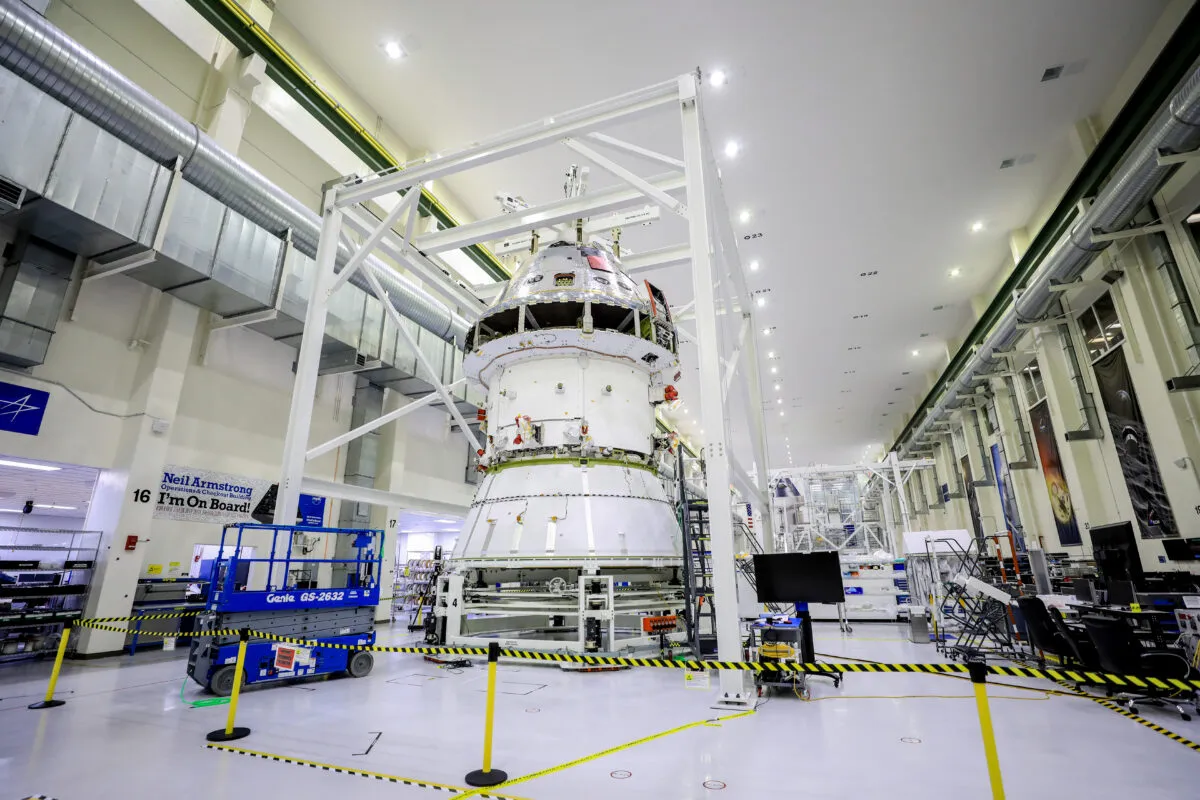This year heralds the first crucial stage in NASA’s ambitious plans to put ‘boots back on the Moon’, as Artemis I gets ready for launch.
Artemis I is an uncrewed flight test of two new space systems: the world’s most powerful rocket – the Space Launch System – and the Orion crew spacecraft.
It will travel to the Moon, skimming 100km above its surface before entering a retrograde orbit that takes it 70,000km beyond the lunar far side and returns to Earth 4–6 weeks later.
Though it will have no human crew this time around, Artemis I's multiple CubeSats will perform a range of science experiments.

Should all go well, Artemis II will take a four-person crew to lunar orbit and back no earlier than 2024.
Finally, Artemis III aims to send astronauts to the lunar surface in 2025, with NASA vowing to put the first woman on the Moon and the first person of colour.
Beyond this are plans for building the Lunar Gateway, a staging post in lunar orbit that will enable humans to stay at the Moon for months at a time.
The Orion module will house future crews bound for the Moon and for deep space beyond.
Its manager Debbie Korth reveals how Artemis I will put the new spacecraft through its paces.

How will Artemis I test the Orion crew and service module?
There are several big systems that we want to check out.The Orion capsule has a 4.9m diameter heat shield – we need to see how that performs.
Orion will come back from the Moon at about 40,000km/h and the heat shield will get to about 2,750˚C.
Another objective is our entry, descent and landing back on Earth. At around 480km/h, the 11 parachutes start deploying.
When the capsule hits the water, it’s got to be at 32km/h or less. That whole sequence is a very orchestrated set of events we’ll be testing.
Finally, there’s the Crew Module Uprighting System, which deploys a series of bags and balloons [to keep Orion floating] until the recovery crew picks it up.

What are the challenges with Orion, compared with past vehicles?
One of the biggest ones is the overall mass.
We’re trying to build a spacecraft that’s robust and can support four people for 21 days. But it’s also got to be light enough that you can actually fly it.
The other is distance. The Space Shuttle and the International Space Station went to low-Earth orbit a couple of hundred kilometres up.
We’re going 385,000km to the Moon.
If you have a problem, coming home can take up to three days, so Orion has many redundant [back-up] systems.
Our Launch Abort System on top of the Orion capsule is also quite unique.If there’s a problem during the launch, it can pull the spacecraft off immediately.
There’s a lot more safety-critical redundancy built into this vehicle than in the past.
When Artemis I launches, will you be holding your breath?
For me, I think the first ‘Ahhh’ moment will be when the Launch Abort System separates from the spacecraft.
That means we’ve achieved a safe orbit, we no longer need to have the ability to pull the crew module off.
Getting into orbit around the Moon will be another, ‘Wow, we made it!’ moment.
This spacecraft is going further than any human-rated spacecraft ever.
We’re going not just to the Moon 385,000km away, but another 64,000km beyond that.
In pictures from the spacecraft you’ll be able to see the Moon and Earth – I think it’s going to be beautiful.
The third thing will be the landing back on Earth. That’s when we are really going to prove our systems.
What are your dreams for the Artemis programme?
To me, Artemis I and II are proving out flights. What I’m most looking ahead to is Artemis III, when we have boots on the Moon again.
That to me is really exciting. I have three kids; two are daughters and one’s in high school.
When I talk to her about putting a woman on the Moon she says, “What! A woman never went?”.
That’s what I’m really looking forward to.
Orion module's first flight, step-by-step

- Orion’s first test flight will last longer and travel further than any Moon mission that has gone before
- SLS and Orion launch from Kennedy Space Center; boosters and core stage jettisoned.
- Orion and the Interim Cryogenic Propulsion Stage (ICPS) reach Earth orbit.
- A 20-minute trans-lunar injection burn propels Orion towards the Moon.
- Orion separates from ICPS. ICPS takes dotted grey line to a disposal orbit around the Sun.
- First lunar fly-by, 100km from the surface.
- Orion enters a distant retrograde orbit (DRO) around the Moon.
- At its furthest point, Orion is 64,000km from the Moon’s surface.
- Orion leaves DRO and begins return to Earth.
- Second fly-by of the lunar surface; thrusters fire to begin Orion’s return coast to Earth.
- Orion’s crew module separates from the service module.
- Atmospheric entry at 39,500km/h.
- Orion’s splashdown in the Pacific Ocean, with recovery by the US Navy.
A. B. C:ICPS deploys its 10 CubeSats at the points shown.
Mission durations
- Total: 26–42 days
- Outbound transit: 8–14 days
- DRO stay: 6–19 days
- Return transit: 9–19 days
This article originally appeared in the October 2022 issue of BBC Sky at Night Magazine.

